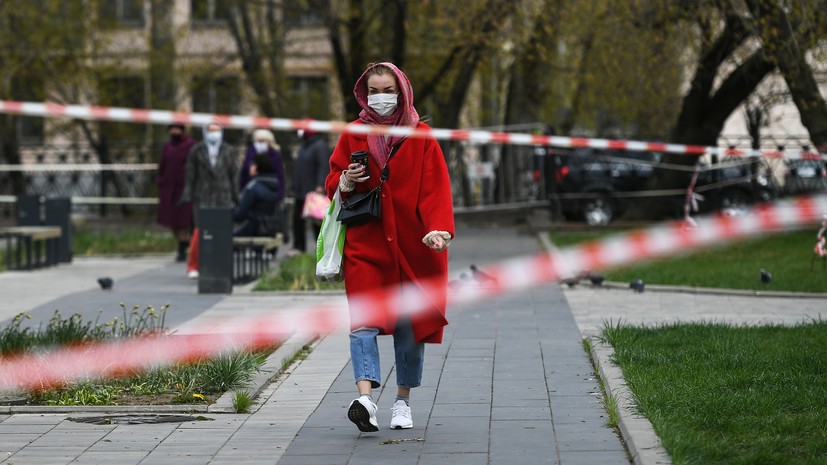The head of Rospotrebnadzor Anna Popova allowed the extension of the current restrictions in the Russian Federation until June, if the Russians violate the regime of self-isolation during the May holidays.
“If we start breaking today, then on May 12 it will be obvious that we need to strengthen, maybe. But if we do not start to violate, we can hope that a number of restrictions can be lifted. But today it is only hope, ”Popova said on the air of“ Russia-1 ”.
Popova noted that it is very important to “sit out” the holidays and not break anything. “This is a very difficult test to pass,” she said.
At the same time, the head of the Ministry of Health, Mikhail Murashko, suggested that part of the restrictive measures in the Russian Federation would continue until the vaccine appeared.
“Restrictive measures - they will also have to be removed in stages, but some of them will have to be preserved until the emergence of medical measures to prevent proliferation,” the minister said on the air of “Russia-1”.
He also did not rule out that a second wave of incidence could occur if population immunity is not formed.
“Yes, it could be another peak, but we are talking about the fact that the virus will still circulate for a certain time,” Murashko believes.
The Minister separately mentioned patients who self-medicate coronavirus infection. According to him, among such people, a severe course of the disease is most often found.
“In the case when the patient is independently treated, he waits, well, taking independent treatment, that this situation is about to be resolved. But unfortunately, this category of patients forms a pool from those extremely difficult patients who then need intensive care, ”he said.
According to the latest data, the total number of confirmed cases of COVID-19 in 85 Russian regions reached 134,687. Over the past day, 10,633 new cases of COVID-19 were detected in Russia. For the days preceding this, 9623 new cases were found in the Russian Federation, the day before - 7933.
From the beginning of the epidemic in Russia, 1,280 people (0.99%) have died from complications arising from COVID-19 and concomitant diseases. Of these, 58 have died in the last day. At the same time, 16 639 people (12.4%) recovered. Over the past 24 hours, this figure has grown by 1,626 people.
Director General of the Federal State Budgetary Institution Scientific Research Center for Cardiology of the Russian Ministry of Health, Academician of the Russian Academy of Sciences Sergei Boytsov linked the growth rate of confirmed cases of COVID-19 with an increase in the number of PCR tests.
At the same time, Boytsov noted that "the epidemic process is developing in the regions." He did not rule out the connection of this circumstance "with insufficient discipline of citizens."
“From my point of view, quarantine measures should be much tougher, and the degree of responsibility for violation of requirements is higher,” Boytsov said.
The head of the Kommunark infectious diseases hospital Denis Protsenko spoke about the peculiarities of the spread of COVID-19 in Russia, and also estimated the likelihood of the incidence of Russians according to the “Italian scenario”.
Recall that in March Italy was the second country in the number of cases of coronavirus in the world after China. Among Italians, mortality rates are also high. According to Johns Hopkins University, this figure in Italy exceeds 13%. The country has more than 209 thousand sick and over 28 thousand dead.
The Russian doctor said that in Italy there is a "pronounced regional development" of the incidence.
“An absolutely catastrophic situation with a large number of patients, mechanical ventilation and deaths in the north of Italy and a milder course in the south. So what is our Italian scenario? Well, probably not, although we are very afraid of him, ”said Protsenko. However, the doctor said that most countries demonstrate their developmental features of COVID-19.
He noted that Moscow, as an “entry hub”, managed to take actions that prevented the rapid spread of the disease throughout the country. As useful measures, Protsenko cited a regime of self-isolation, entry control, provisional hospitals, and surveillance. According to the doctor, these steps for two to three weeks "gave the system time to rebuild."
Protsenko added that the peculiarity of the course of infection in the capital is the susceptibility to the severe course of the disease, not only for patients aged.
“The severe course with hospitalization in the intensive care unit of not only elderly patients, but also patients of the middle age group with a transfer to mechanical ventilation, is also probably our feature,” the head of the hospital in Kommunarka believes.
Among other things, Protsenko said that the classic epidemics flow through three waves, recalling in this regard a repeated outbreak of the disease in China. “In which scenario we will flow, it is still very difficult to say,” he concluded.
The chief epidemiologist of the Ministry of Health, academician of the Russian Academy of Sciences Nikolai Briko said that the end of the epidemic can only be judged if certain conditions are met.
“One can speak about the end of the cycle of the epidemic process only when the proportion of new diseases is less than 1%,” he said in an interview with the Parliamentary newspaper.
According to him, the situation in the regions of the country is heterogeneous, while lately "there has been a slight slowdown in the intensity of the development of the epidemic process of infection."
“So, over the past month, the growth rate of the number of new infections has decreased from 27% (April 2) to 6.9% (May 1), that is, almost four times. Perhaps the incidence is stabilizing, followed by a decline in June, ”suggested Briko.

